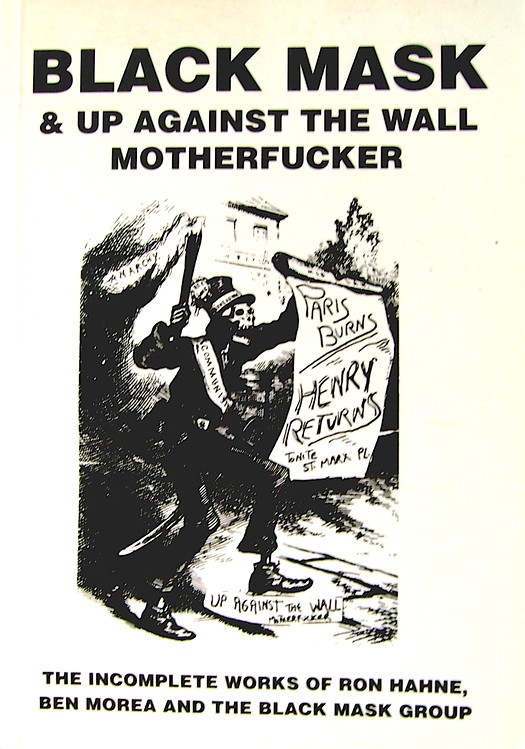Sharon Zukin: Naked City: The Death and Life of Authentic Urban Places (2009)
Filed under book | Tags: · city, gentrification, new york, public space, urbanism

As cities have gentrified, educated urbanites have come to prize what they regard as “authentic” urban life: aging buildings, art galleries, small boutiques, upscale food markets, neighborhood old-timers, funky ethnic restaurants, and old, family-owned shops. These signify a place’s authenticity, in contrast to the bland standardization of the suburbs and exurbs.
But as Sharon Zukin shows in Naked City, the rapid and pervasive demand for authenticity–evident in escalating real estate prices, expensive stores, and closely monitored urban streetscapes–has helped drive out the very people who first lent a neighborhood its authentic aura: immigrants, the working class, and artists. Zukin traces this economic and social evolution in six archetypal New York areas–Williamsburg, Harlem, the East Village, Union Square, Red Hook, and the city’s community gardens–and travels to both the city’s first IKEA store and the World Trade Center site. She shows that for followers of Jane Jacobs, this transformation is a perversion of what was supposed to happen. Indeed, Naked City is a sobering update of Jacobs’ legendary 1961 book, The Death and Life of Great American Cities. Like Jacobs, Zukin looks at what gives neighborhoods a sense of place, but argues that over time, the emphasis on neighborhood distinctiveness has become a tool of economic elites to drive up real estate values and effectively force out the neighborhood “characters” that Jacobs so evocatively idealized.
Publisher Oxford University Press, 2009
ISBN 0195382854, 9780195382853
312 pages
review (PD Smith, The Guardian)
interview with the author (Rorotoko)
Black Mask & Up Against the Wall Motherfucker: The Incomplete Works of Ron Hahne, Ben Morea, and the Black Mask Group (1993)
Filed under book | Tags: · 1960s, anarchism, art, new york, politics

Founded in New York City in the mid-1960s by self-educated ghetto kid and painter Ben Morea, the Black Mask group melded the ideas and inspiration of Dada and the Surrealists, with the anarchism of the Durruti Column from the Spanish Revolution. With a theory and practice that had much in common with their contemporaries the San Francisco Diggers, Dutch Provos, and the French Situationists—who famously excommunicated 3 of the 4 members of the British section of the Situationist International for associating too closely with Black Mask—the group intervened spectacularly in the art, politics and culture of their times. From shutting down the Museum of Modern Art to protesting Wall Street’s bankrolling of war, from battling with Maoists at SDS conferences to defending the Valerie Solanas shooting of Andy Warhol, Black Mask successfully straddled the counterculture and politics of the 60s, and remained the Joker in the pack of both sides of “The Movement.”
By 1968 Black Mask dissolved into “The Family” (popularly known as Up Against The Wall Motherfucker—the name to which they signed their first leaflet), which combined the confrontational theater and tactics of Black Mask with a much more aggressively “street” approach in dealing with the police, and authorities. Dubbed a “street gang with analysis” they were reputedly the only white grouping taken seriously by the Black Panther Party, and influenced everyone from the Weathermen to the “hippy” communal movements.
This volume collects the complete ten issues of the paper Black Mask (produced from 1966-1967 by Ben Morea and Ron Hahne), together with a generous collection of the leaflets, articles, and flyers generated by Black Mask, and UATW/MF, the UATW/MF Magazine, and both the Free Press and Rolling Stone reports on UATW/MF.
By Ben Morea and Ron Hahne
Edited by Jacques Vache Editorial Group, London, UK
Anticopyrighted under the Berne, Baby, Berne convention; any portion maybe produced by any means necessary, as permitted under the Copy-Cat Riot Actions, 1981, 1985, and 1990
ISBN 1873176708
140 pages
via Self Learn Los Angeles
wikipedia
publisher (2011 edition)
google books (2011 edition)
PDF (no OCR)
Comments (3)Andreas Huyssen: Present Pasts: Urban Palimpsests and the Politics of Memory (2003)
Filed under book | Tags: · architecture, berlin, buenos aires, city, history, memory, new york

Memory of historical trauma has a unique power to generate works of art. This book analyzes the relation of public memory to history, forgetting, and selective memory in Berlin, Buenos Aires, and New York—three late-twentieth-century cities that have confronted major social or political traumas. Berlin experienced the fall of the Berlin Wall and the city’s reemergence as the German capital; Buenos Aires lived through the dictatorships of the 1970s and 1980s and their legacy of state terror and disappearances; and New York City faces a set of public memory issues concerning the symbolic value of Times Square as threatened public space and the daunting task of commemorating and rebuilding after the attack on the World Trade Center.
Focusing on the issue of monumentalization in divergent artistic and media practices, the book demonstrates that the transformation of spatial and temporal experience by memory politics is a major cultural effect of globalization.
Publisher Stanford University Press, 2003
Cultural Memory in the Present series
ISBN 0804745617, 9780804745611
192 pages

